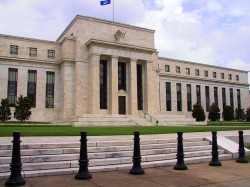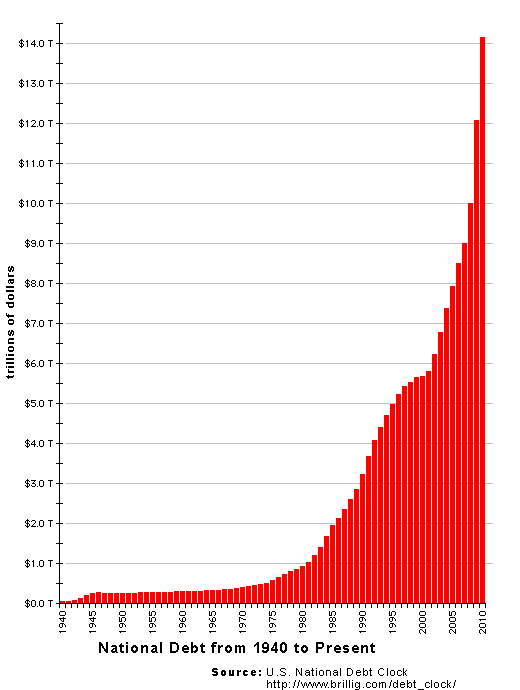Buying sprees by billion-dollar hedge funds and real-estate investment firms have investors owning nearly 20 percent, or one out of every five, of the region’s single-family houses and condominiums, according to an Arizona Republic analysis of recent sales data.
That’s double the number of rentals considered normal in metro Phoenix in 2000, according to housing-market analysts.
Although it is too soon to gauge the impact of such a large increase in rental properties, the jump in investor-owned properties has the potential to change the character of neighborhoods, influence the options available to other homebuyers and ultimately alter the trajectory of the region’s housing recovery.
Since 2009, deep-pocketed buyers have snapped up tens of thousands of houses in all-cash deals, helping to stanch the bleeding in metro Phoenix’s real-estate market. Their purchases have driven up the region’s median home price 40 percent in the past year and significantly cut the supply of houses for sale.
While real-estate analysts laud investors for buying when others wouldn’t, analysts also express concern about the potential impact of so many buying in such a short time.
In Avondale’s 85323 ZIP code in the West Valley, with many relatively new, affordable homes, 32 percent of the houses are investor-owned rentals. That’s one of the highest rates for single-family homes in metro Phoenix.
In several other West Valley neighborhoods, more than 30 percent of all homes are rentals. About 32 percent of houses and condos in north Glendale ZIP code 85301 are rentals.
But the trend isn’t limited to the West Valley. In the East Valley, 30 percent of all homes in central Mesa’s 85210 ZIP code are owned by investors. And large swaths of the Valley’s core include ZIP codes where 25 percent or more of all residential properties are investor-owned.
Market analysts worry about investors’ impact on traditional buyers, who are finding it extraordinarily difficult this year to close a deal. Sellers, especially those of distressed properties and of homes priced below $150,000, often take the simpler route, accepting bids from investors paying cash instead of from traditional buyers who need to get a mortgage. Bidding wars on the moderately priced houses are the norm, and investors usually win.
What investors plan to do with nearly 225,000 homes they own in metro Phoenix is the multibillion-dollar question. When a handful of major investors, who together have purchased more than 10,000 Phoenix-area homes this year, decide to buy, sell or hold, their decisions will affect the rest of the market. Now, the majority of investors are renovating and renting out the properties. But if the big companies decide to take their profit in five to seven years and move on, real-estate insiders worry that a flood of houses back on the market could send prices spiraling down again.
“Investors helped stabilize Phoenix’s housing market,” said Mark Stapp, director of real-estate development for Arizona State University’s W.P. Carey School of Business. “My concerns are that too many investors are treating Phoenix’s homes as a commodity, and not the area as a community.”
Who’s buying
Investors have purchased more than 30 percent of all single-family houses and condominiums sold this year, and their purchases have grown to an even bigger percentage of all sales in the past few months.
The type of investor has shifted dramatically this year, from small and large local investors to billion-dollar funds based in New York and Los Angeles. A Republic analysis of purchases, provided by real-estate data firm Information Market, found that in some areas of metro Phoenix, the most active three or four investors own more than half of the rentals.
The most prolific homebuyers are New York-based Blackstone Real Estate, Los Angeles-based Colony Capital and Scottsdale-based American Residential Properties. Those groups alone have purchased more than 3,000 houses in the area so far this year.
Local investor and real-estate agent Julie Bieganski is selling a 2,000-square-foot south Phoenix house for $82,000. The day the house went on the market in early October, a real-estate agent representing Tempe-based Treehouse Group made her a full-cash offer to buy the house “as is” for cash and close within 30 days. Treehouse is buying homes for Blackstone and other investors.
“According to the contract, the buyer has purchased 1,400 houses in Maricopa County in the past 90 days and plans to own the home and rent it out for five to seven years,” she said.
The investor-buying frenzy in metro Phoenix began with smaller investors like Bieganski with the cash to pick up a couple of houses as foreclosures peaked more than two years ago. With auctions running all day in front of the Maricopa County Courthouse, large out-of-state buyers’ interest in the market grew. As foreclosures slowed, many of these investors turned to short sales. But those deals must be lender-approved and take longer to close. Now, the biggest and richest of the investors have stepped in, often purchasing foreclosure houses previously bought by those earlier investors. Still bullish on the Phoenix market even as prices rise, these big investors sometimes buy one home at a time — and often 50 to 100 homes at once.
Next moves
Investors now own 225,000 homes, the same number of all homes typically found in a city the size of Glendale. Their profit-focused strategy is a key issue for everyone else with a stake in the housing market.
Because of the high demand for rental homes and relatively low prices to buy, most are making 5 to 10 percent annual returns on houses by leasing them to tenants. But investors don’t hold on to properties forever, and those that control hundreds or thousands of properties can have outsize impact. If too many big property-holders try to sell at the same time, it could lead to another drop in Valley home prices.
Large investors are guarded about strategies. Publicly traded companies such as Blackstone can’t talk about future plans because that violates shareholders’ rights. Many of the latest investors in the Phoenix market want to become publicly traded real-estate investment trusts to attract smaller investors looking to grab a stake in real estate.
Colony said it plans to keep most of its metro Phoenix homes as rentals for five to seven years. The company is planning to go public next year. “We started looking at investing in housing a year ago. There’s a real opportunity to renovate homes and lease them to people who need them,” said Justin Chang, principal of Colony Capital and acting CEO of Colony American Homes. “We like what we have bought in Phoenix and the value there.”
American Residential also has a long-term buy and hold strategy. “We are not in business to flip real estate. American Residential hasn’t sold one of the 1,000 houses it has purchased in Phoenix since 2008,” said Steve Schmitz, CEO and founder of the firm. “We are in the business of providing nice, clean housing to families.”
Mike Orr, who analyzes real-estate information for ASU’s W.P. Carey School of Business, is another market analyst with concerns about the investor influx. “We don’t know their plans. They don’t want their competitors to know their plans. But they clearly have a lot of money to spend.”
The rental market
In Avondale ZIP code 85323, Liz Moad, who said she has owned her home there for three years, pointed across the street and said, “This house has had four families move in and out in the last two years.”
Empty houses that had been foreclosed on and auctioned are now rentals, said Chris Sammons, who said he has owned his home there for five years.
“Definitely you don't want to see them just sitting there empty,” Sammons said.
“Probably within the last month there's been half a dozen different houses where the ‘for rent’ signs have come up.”
“I think eventually when the economy picks up more, you are going to have more people that will take the next step to actually owning their own home,” he said.
Renter demand so far has kept up with the number of investor-home purchases in metro Phoenix, mostly because there are now more potential tenants. In addition to the typical renter who can’t afford to purchase a home, and newcomers moving to Arizona from out of state, former homeowners who lost houses to foreclosure must rent to rebuild their credit. Then there are the prospective homebuyers who are getting outbid by investors. Finally, there is a new group of people who can afford to buy but choose to rent.
A record 3,500 leases a month for rental homes in the Valley were signed in June, July and August, according to the Arizona Regional Multiple Listing Service. Houses in the best locations often draw competing offers.
“We were astounded by the rental market here,” said Mara Lewis, who relocated to Phoenix from Wisconsin. “Not only the up-front fees, and the methods by which they had to be paid (cashier’s checks), but the rules for what a (rental) house has to have here is very lax. We had to purchase our own washer and dryer.”
She and her husband own rental properties in Wisconsin and chose to rent here instead of buying. Lewis leased through a real-estate agency and isn’t sure who owns the house.
Jennifer Taylor said she moved out of a north Phoenix condominium because most of the units in the building were owned by different investors, and the maintenance varied by condo, as did the type of tenant. “The neighbors were messy, and I always had my stuff vandalized,” said Taylor, who recently moved to a central Phoenix condo. “Now I know my landlord, and the issues I had since moving in were all fixed that same week.”
Forecast for future
Before the boom, investors owned 8 to 10 percent of metro Phoenix’s houses. The current rate of 18.2 percent is double that. The shift is so new that it’s difficult to predict what might happen.
Stapp said, “A valid concern is whether people will want to buy homes in neighborhoods where there are the most rentals. We don’t know yet.”
But market analysts offer some scenarios.
The best-case scenario is for investors to hold onto houses for at least a few years and slowly sell to regular buyers before home prices soar. It wouldn’t have too large of a negative impact on the market if one major investor sold all of its homes as long as other major investors continued to hold on and lease out their properties until the supply of houses stabilizes again, market analysts said. Then there’s the worst-case scenario: Home prices continue to climb, and all of the major investors want to lock in their return and try to sell at once.
“It was good when all of the investors came into metro Phoenix and bought when no one else was buying,” said Orr, an early investor himself. “But it might be time for investors to take a rest, and let regular buyers have a chance.”
Includes information from data reporter Matthew Dempsey and 12 News reporter Melissa Blasius.










































